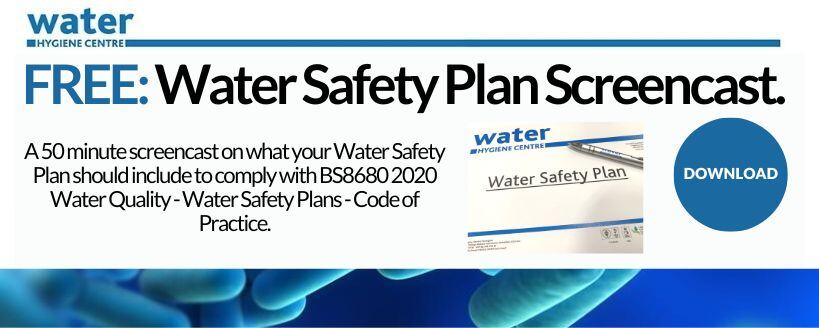 In this blog, we look at some recent experiences when water safety and the Authorising Engineer (Water) role and responsibilities haven’t been understood, along with some explanations as to why this might be.
In this blog, we look at some recent experiences when water safety and the Authorising Engineer (Water) role and responsibilities haven’t been understood, along with some explanations as to why this might be.
Flatpack furniture comes with step-by-step helpful instructions on how to erect the piece of furniture safely and correctly.
Washing of items of clothing, reading the garment label advises on the correct type of wash and temperature to ensure no damage is caused.
Baking a cake, following the recipe ensuring the correct ingredients, weights and measures of those ingredients are used when mixing them and finally how long the mixture must be baked and cooled before being eaten.
Water Safety Plan and Water Safety Group
The same can be said with the need to always read that ‘water safety’ label… We are all familiar with terms such as Water Safety Plan (WSP) and Water Safety Group (WSG)
The WSG will have devised a WSP [watch our original screencast on WSP creation based on the BS8680 (issue from 2020) which will outline many elements of the correct and safe operation of water safety within the organisation such as:
- Terms of Reference for the WSG;
- Membership to the WSG with roles and responsibilities defined for this multidisciplinary group;
- Reporting routes and communications pathways;
These are just a few of the ‘labels’ that exist for Water Safety!
However, recent experiences of where ‘the label hasn’t been read correctly’ or ‘the label isn’t understood’ concerning water safety include:
-
New Project Designs
INCORRECT ASSUMPTION The designers / builders / project managers believe the Authorising Engineer (Water) is here to review, approve and sign off all specifications & designs, in some instances the term ‘due diligence’ has been used to negate the need for the Water Safety Group involvement.
CORRECT ASSUMPTION: The WSG is a multidisciplinary group of professionals with a collective responsibility for water safety. The WSG is to be actively engaged with projects from the concept stage moving forward through the life of the project, so much so there could even be a ‘Project Water Safety Group’ established with core members from the main WSG joining. The WSG is to review those documents, designs and plans associated with the project and to feedback on these and ultimately approve them. The Authorising Engineer (Water) is an active member of the WSG and as such should be part of these reviews, this being a correct conduit for such feedback. -
New project plans
INCORRECT ASSUMPTION: Project managers believe the Authorising Engineer (Water) is there to prepare commissioning plans, the sampling plans associated with their projects and to make the final decision that the building is safe to be occupied by staff and patients.
CORRECT ASSUMPTION: As with the item above, the Water Safety Group is to review and feedback – may even support development. The AE(W) should be an active member of the WSG and as such this is the correct conduit for such feedback. -
Water Safety Auditing and verification
The annual report prepared by the Authorising Engineer (Water) is typically a draft shared with the Water Safety Group for review before being issued to the Designated Person.
INCORRECT ASSUMPTION: This does not mean members of the Water Safety Group taking that draft audit, editing the content and changing the findings and then directly issuing to the Designated Person without the AE(W)’s knowledge or consent.
CORRECT ASSUMPTION: The preparation of an annual independent audit by the AE(W) for the Designated Person reports on the status of water safety based on feedback and observations, editing and issuing without the AE(W)’s knowledge compromises the fundamentals of the report. -
Legionella risk assessments and risk minimisation schemes
These documents are typically owned by an Authorised Person [AP] who can oversee their completion and creation.
INCORRECT ASSUMPTION: The role of the Authorising Engineer (Water) is to verify all the recommendations reported and agree on an action plan for their completion.
CORRECT ASSUMPTION: The AP, who is supported by Competent Persons (CPs), should be reviewing the Legionella Risk Assessment and recommendations, any issues to be addressed and agreed with the Legionella Risk Assessor. The risk assessment report and risk minimisation scheme are to be presented to the WSG for approval and subsequent status monitoring at further WSG meetings. -
Legionella Written Schemes of Control
These are defined based on the findings of the risk assessment report for a building/property and form part of the overall WSP for an organisation. As with the risk assessment element detailed above, these written schemes of control would typically be prepared and owned by the AP for the building/property.
INCORRECT ASSUMPTION: The expectation by a client’s PFI partner is that the AE(W) has a contractual obligation to prepare these written schemes of control.
CORRECT ASSUMPTION: BS8580 part 1 details the risk assessment but does not include the preparation of the written scheme although the content of the risk assessment will help inform the preparation. HTM04-01 details ‘the maintenance manager should be given the responsibility for the implementation of risk-based operational maintenance’, those ‘responsibilities’ are detailed in the HTM04-01 and include ‘..procedures to be carried out’. Within the WSP, the Governance Policy should have defined the roles and responsibilities of all those involved in water safety. The AE(W) may review and feedback on WSP including the written schemes of control to assist with proactive development.
In the examples above why are they being experienced at present… some possible explanations include…
- The Water Safety Plan is not correctly defined
- Knowledge of the Water Safety Plan and processes are not known or are assumed
- Roles and responsibilities of the members of the Water Safety Group are not correctly defined and/or known
- There are time pressures / constraints to get documentation / reports approved
Ensuring the existence of the Water Safety Group, the members and their responsibilities are known and are engaged allowing them sufficient time to review and provide support is key to successful water safety. As a closing observation, that final element ‘sufficient time to review and provide support’ is something that all organisations will be struggling with at present what with new variants of covid and staff illnesses and absence!
Feel free to reach out if you have any questions about this blog or if you would like to consult with one of our experts for further advice on water hygiene.
Editor’s Note: The information provided in this blog is correct at the date of original publication – April 2022.
© Water Hygiene Centre 2022








